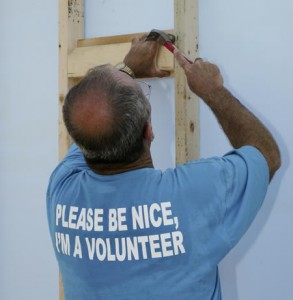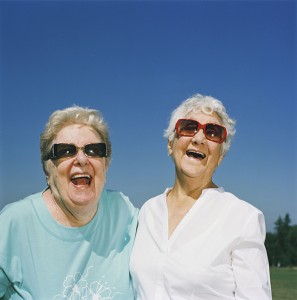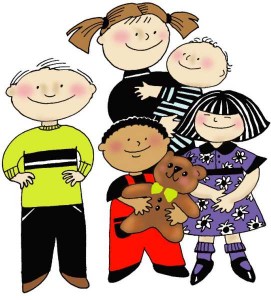Volunteer Activity: Top U.S. Cities and States
Wednesday, December 30th, 2009 The top ten rated U.S. cites for volunteering are: Minneapolis-St. Paul, MN; Portland, OR; Salt Lake City, UT; Seattle, WA; Kansas City, MO; Columbus, OH; Oklahoma City, OK; Hartford, CT; Denver, CO; and Washington, DC.
The top ten rated U.S. cites for volunteering are: Minneapolis-St. Paul, MN; Portland, OR; Salt Lake City, UT; Seattle, WA; Kansas City, MO; Columbus, OH; Oklahoma City, OK; Hartford, CT; Denver, CO; and Washington, DC.
Numbers range from 38.4% of all residents volunteering in Minneapolis-St. Paul (908,900 volunteers) to 30.9% of residents (1.3 million volunteers) in Washington.
The top ten rated US states for volunteering are: Utah, Nebraska, Minnesota, Alaska, Iowa, Montana, South Dakota, Kansas, Vermont, and North Dakota.
Here’s how the state numbers break down: from Utah, with an average annual volunteer rate of 43.5% and 817,200 volunteers to North Dakota, with an average volunteer rate of 35% and 174,800 volunteers.
The top activities performed by volunteers were fundraising, collecting and distributing food, general labor, tutoring and teaching, mentoring youth, and management.
The bottom five states? Mississippi, Louisiana, Florida, Nevada, and New York. Their numbers range from 20.9% to 18.7% of their residents volunteering.
National trends show 60.8 million volunteers, for a rate of 26.2%. The total number of hours volunteered is estimated at 8.1 billion. The places with the highest number of volunteers are religious organizations (35.7%) and educational or youth service organizations (26.7%).
As the economy continues its climb out of recession, volunteers will continue to serve a vital role in the work and success of U.S. non profit organizations.
Source: Volunteering In America
 Volunteering appears to prove the saying, “’tis better to give than to receive.” While most volunteers’ intentions are solely to help others, researchers say that the benefits to the volunteers are also numerous.
Volunteering appears to prove the saying, “’tis better to give than to receive.” While most volunteers’ intentions are solely to help others, researchers say that the benefits to the volunteers are also numerous. Tap into a group you might not have considered for volunteers: kids! Many parents and guardians are encouraging their children to volunteer during their downtime. More and more high schools require volunteer projects to graduate. Community giving days and National Volunteer Week focus attention on nonprofits. Is yours ready to take advantage of the increase in younger volunteers?
Tap into a group you might not have considered for volunteers: kids! Many parents and guardians are encouraging their children to volunteer during their downtime. More and more high schools require volunteer projects to graduate. Community giving days and National Volunteer Week focus attention on nonprofits. Is yours ready to take advantage of the increase in younger volunteers?

 The Special Olympics of Southern California and the Madrona Marsh Preserve also benefit from CAT activities. Honda associates volunteer and assist at the Special Olympics gymnastics event—which has been sponsored by American Honda for years. And American Honda volunteers help with restoration work at the Preserve – home to rare plants and animals in Torrance, CA. Each year associates assist with planting, weeding, and picking up trash on Habitat Restoration Day.
The Special Olympics of Southern California and the Madrona Marsh Preserve also benefit from CAT activities. Honda associates volunteer and assist at the Special Olympics gymnastics event—which has been sponsored by American Honda for years. And American Honda volunteers help with restoration work at the Preserve – home to rare plants and animals in Torrance, CA. Each year associates assist with planting, weeding, and picking up trash on Habitat Restoration Day. Finally, kids all across America benefit from Honda’s dedication to Little League Baseball. Honda is the official sponsor of Little League Baseball and supplies the vehicles, creates an interactive display and gives out collectible pins at the LL World Series. Honda also contributes $100,000 annually to help create or renew baseball leagues in urban areas by helping find and build baseball diamonds and teaching parents how to run a league in their community.
Finally, kids all across America benefit from Honda’s dedication to Little League Baseball. Honda is the official sponsor of Little League Baseball and supplies the vehicles, creates an interactive display and gives out collectible pins at the LL World Series. Honda also contributes $100,000 annually to help create or renew baseball leagues in urban areas by helping find and build baseball diamonds and teaching parents how to run a league in their community.